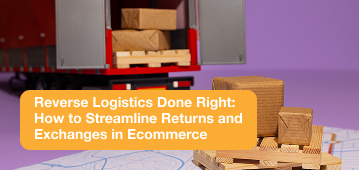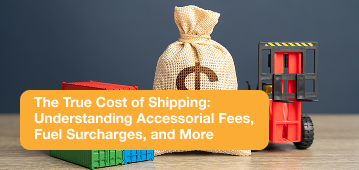Everything You Should Know About LTL (Less-than-Truckload)
LTL shipping, which stands for less-than-truckload shipping, refers to the practice of transporting loads of goods that do not fill a full truck. When shipping times are somewhat flexible, a full truckload wouldn’t make sense to ship because of the nature and demand of a product (for instance, high-value items only needed in small quantities, like flat-screen TVs and other large electronics), this method, sometimes referred to as less-than-load shipping, works well.
LTL, or Less-than-Truckload, is an alternative to FTL, or a full-truckload, which is preferable for companies moving larger loads of merchandise or with tight deadlines for point-A to point-B deliveries.
One to six pallets, each of which has a weight capacity of 200 to 5,000 pounds, are stored in a single LTL shipment.
How does LTL Shipping Operate?
Let’s start with the fundamental elements to gain the best understanding of how Less-than-Truckload shipping operates. Here is a breakdown of all the steps in an LTL shipment.
Pallets
As was already mentioned, pallets are typically used for LTL shipments to maintain stability, make loading and unloading easier, and keep related products together. Pallets are typically made of wood, but more and more sustainable materials like steel and plastic are being used in their manufacture.
Pallets range in size from 2 by 2 feet to 4 by 6 feet. They are built with slats to make it simple for forklifts to pick them up and move them. Because items must be unloaded and reloaded, sometimes multiple times, to arrive at their destination with other LTL shipments, the mobility of a pallet is essential for successful LTL shipping.
LTL shipments are frequently transported by one of two different types of trucks:
The smaller of the two vehicles, a pickup truck, is typically between 26 and 28 feet long. It is also narrower and lighter than a dry van. Due to their maneuverability on city streets, these more agile transport vehicles are primarily used for local pickups and deliveries.
The larger of the two main truck types used in LTL shipping, called a dry van, can hold noticeably more shipment volume, but because of their size and weight, they are notoriously difficult to maneuver. Typically, 48 or 53 feet long, these trucks can haul up to 45,000 pounds of cargo. As they transport goods from one terminal to another, they are frequently seen on highways and interstates.
Terminals
Terminals are essential components of the Less-than-Truckload shipping infrastructure. Terminals act as drop-off locations where cargo can be unloaded and reloaded onto the following truck to make the most of its journey. At terminals, various LTL shipments going in the same direction are loaded onto the same truck.
The items are once again unloaded and reloaded onto trucks to finish local delivery once they arrive at a suitable delivery terminal.
LTL shipments frequently require more time than FTL shipments to arrive at their final locations because of this loading-unloading-reloading cycle.
Cost Of Freight for LTL Shipments
The cost of freight for LTL shipments is determined by several variables, some of which are at the company’s discretion. Here is a look at those elements and how they affect the cost of LTL.
Primary Considerations for LTL Shipping Costs
When determining the cost of an LTL shipment, size and volume are the two main variables to consider. Most businesses maintain a list of tariffs, or fees, related to various freight requirements. Others might opt for a different pricing scheme or rates per pallet. Nevertheless, the most frequent cost-influencing factors are size and weight.
Freight Categories
The National Motor Freight Traffic Association (NMFTA), which assigns a classification number (NMFC #) to all freight, regardless of whether it is shipped FTL or LTL, has defined a set of freight classes for all types of shipments. The cost of shipping decreases with lower class numbers. The classification system considers an item’s size, value, density, and degree of difficulty needed to ship and deliver it successfully.
Items that are easy to transport, inexpensive, and durable, like building materials, tend to fall into lower categories than fragile, high-value items (like consumer electronics).
Shippers will occasionally agree to combine products from various classes into a single class. A Freight of All Kinds (FAK) agreement is what this one is referred to as.
Why Use a Logistics and Shipping Platform for LTL Freight?
Don’t pick a single LTL carrier if your business ships a lot of LTL packages. Instead, use a platform for shipping and logistics that enables you to compare LTL rates for any given shipment.
Hundreds of LTL carriers that use ECU360’s help have integrations available. You can start looking for the best price and quickest delivery time once you’ve connected your account to these LTL carriers through the ECU360 dashboard. To create a comprehensive shipping solution for your company, you can combine ECU360 LTL integrations with our parcel carrier integrations.
Like





Comments